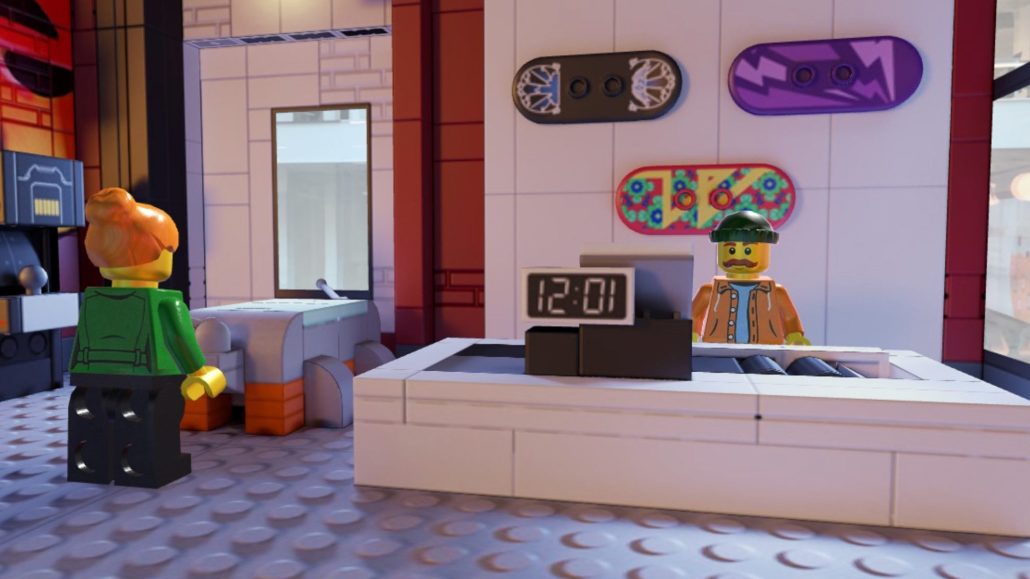Brands are testing augmented reality’s influence on e-commerce

Augmented reality is far from becoming a mass force in advertising, but more brands are using it as a way to get customers to try out products before mobile purchases.
The shift is from using AR for its novelty effect to using the technology where it’s a good fit for a retail experience that’s increasingly happening on mobile devices. There’s also a realization that AR commerce is less about scale in these early days and more about PR, positioning and building knowledge.
Benefit Cosmetics, Speedo and Lego are among a flurry of advertisers weaving AR into their commerce strategies.
“AR should have a big say in the future of commerce and the wider retail industry given how difficult high street stores are finding it now,” said Lou Bennett, head of marketing for Benefit Cosmetics. “The brands who will win be those that are able to integrate offline and online mediums well to provide moments in shopping that are experiential.”
The cosmetics company is developing an AR feature within its “Wow Brows” loyalty app that shows users what they will look like with different eyebrows before they shape their real ones. Once a look has been decided, the person can either buy the products needed to produce the look directly from the app or they can head in-store and hand it to one of the brand’s experts who will then source the products.
Ad position: web_incontent_pos1
It’s still being tested 18 months after it launched, with Benefit Cosmetics focusing early updates on the U.S. “We’ve not launched the AR tool with any noise yet because it’s really important to understand how people are using it so we can make tweaks where needed,” said Bennett. The app is our biggest investment in AR for the last 12 months.”
Bennett said there were no immediate plans to launch an AR product on either Instagram or Snapchat, but did not rule out investments in the long term. It’s a similar stance to swimwear manufacturer Speedo, which is set to launch an in-store iPad service for shoppers to virtually try on goggles later this year. Other brands like Island Records and StudioCanal, however, prefer to stick with the platforms as its less upfront investment.
It’s free to use the tools on Facebook or Snapchat to come up with lenses and camera effects, respectively. Building an AR-enabled app costs money and takes time.
Ad position: web_incontent_pos2
“The in-app route will give companies better performance from a technological standpoint versus using the tools from the platforms because they’re able to use the phone’s processing power, but the platforms offer so much more immediate use cases because the development barriers aren’t there,” said Laurie Ainley, chief technology officer at AR startup Poplar.
Lego is using AR to sell adult Lego Wear apparel. The company has made what it’s calling an AR store, accessible via a Snapchat Snapcode, that once scanned takes people to an AR store where they can buy the streetwear line.
It was a daylong pop-up, doubling as a testing ground for people’s appetite to buy directly from a Snapchat Lens created by We Are Social.
“Our core business will always revolve around physical play and the idea of using your imagination to put bricks together in creative ways, but we see digital and things like the AR-enabled pop-up shop as an extension of that, so we are keen to do this experiment with Kabooki for their clothing line launch,” said Lea Sandell, social media innovation lead at Lego Group.
The catalyst for this investment and AR’s growing role in e-commerce strategies is the integration of the tech into native cameras on smartphones. Google Lens is now integrated in the camera on key flagship Android handsets,for example, while Apple’s recent updates to its ARkit platform continue to make it a more endemic part of how people use their iPhone and iPads.
“AR commerce can work for anything that requires the user to build their understanding and opinion of it prior to holding its physical manifestation in their hands,” said Gracie Page, innovation lead at VMLY&R. “This is why it is currently mainly applied to goods that relate to a user’s identity: AR affords us the opportunity to try things out.”
More in Media

NewFronts Briefing: Samsung, Condé Nast, Roku focus presentations on new ad formats and category-specific inventory
Day two of IAB’s NewFronts featured presentations from Samsung, Condé Nast and Roku, highlighting new partnerships, ad formats and inventory, as well as new AI capabilities.

The Athletic to raise ad prices as it paces to hit 3 million newsletter subscribers
The New York Times’ sports site The Athletic is about to hit 3 million total newsletter subscribers. It plans to raise ad prices as as a result of this nearly 20% year over year increase.

NewFronts Briefing: Google, Vizio and news publishers pitch marketers with new ad offerings and range of content categories
Day one of the 2024 IAB NewFronts featured presentations from Google and Vizio, as well as a spotlight on news publishers.
Ad position: web_bfu


